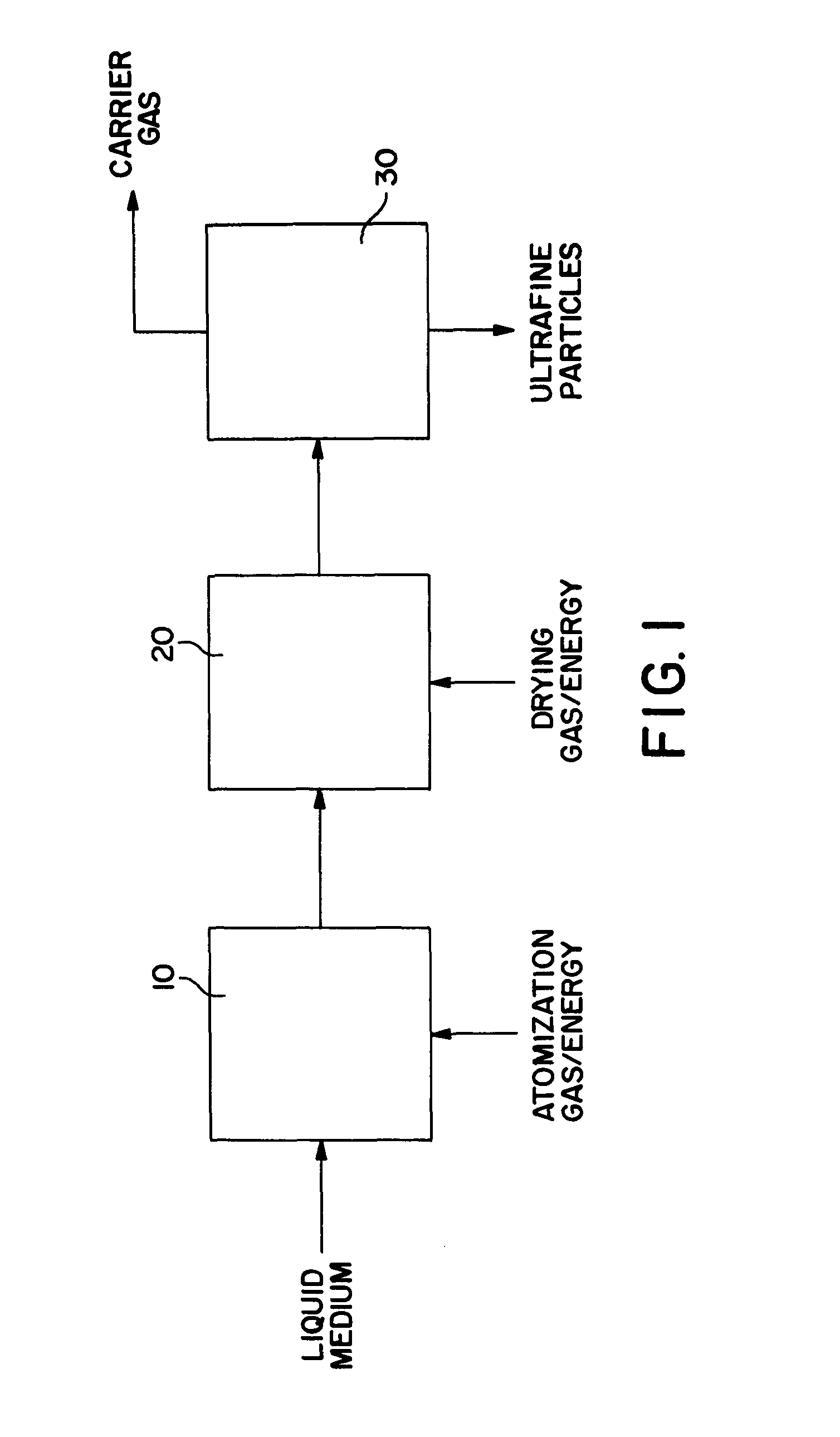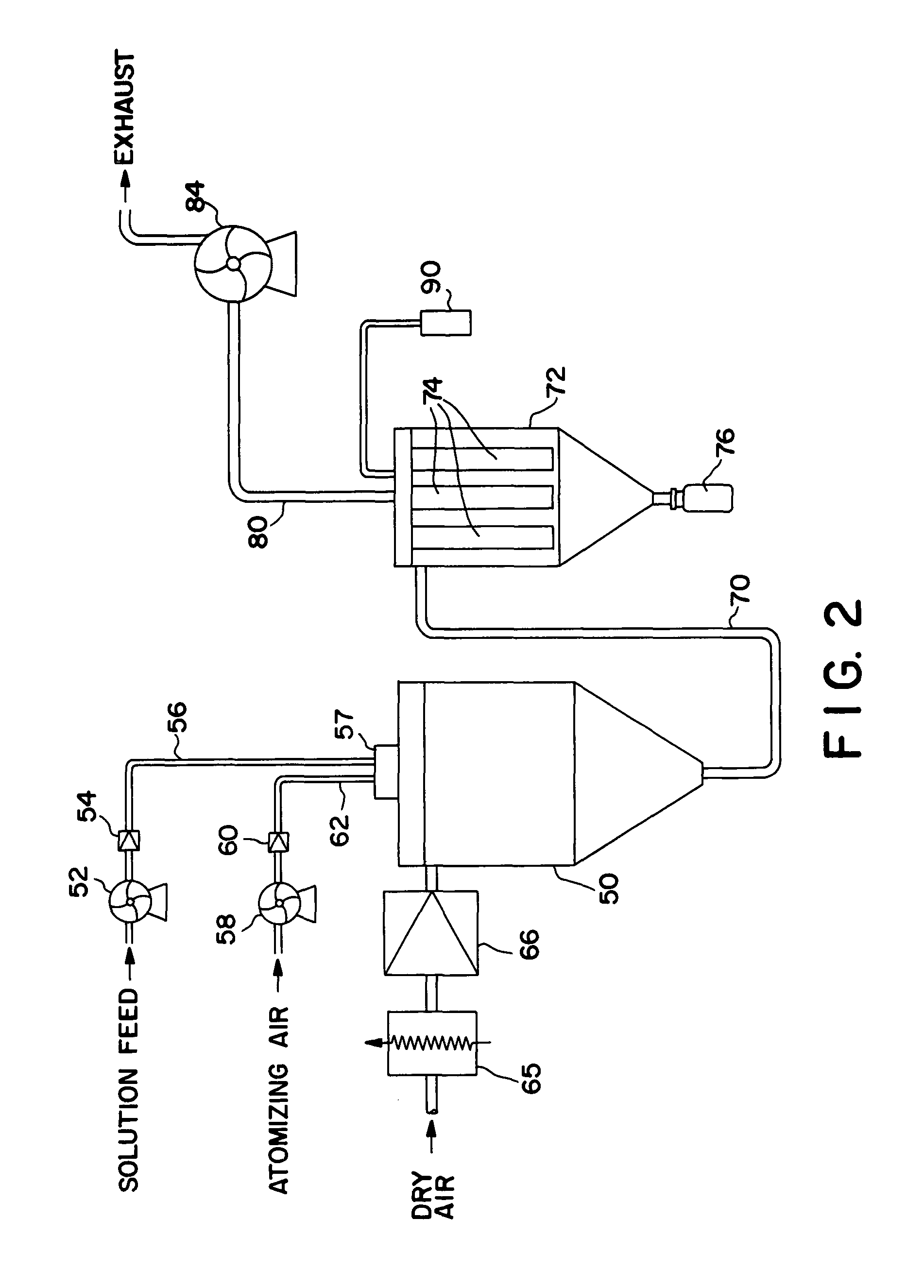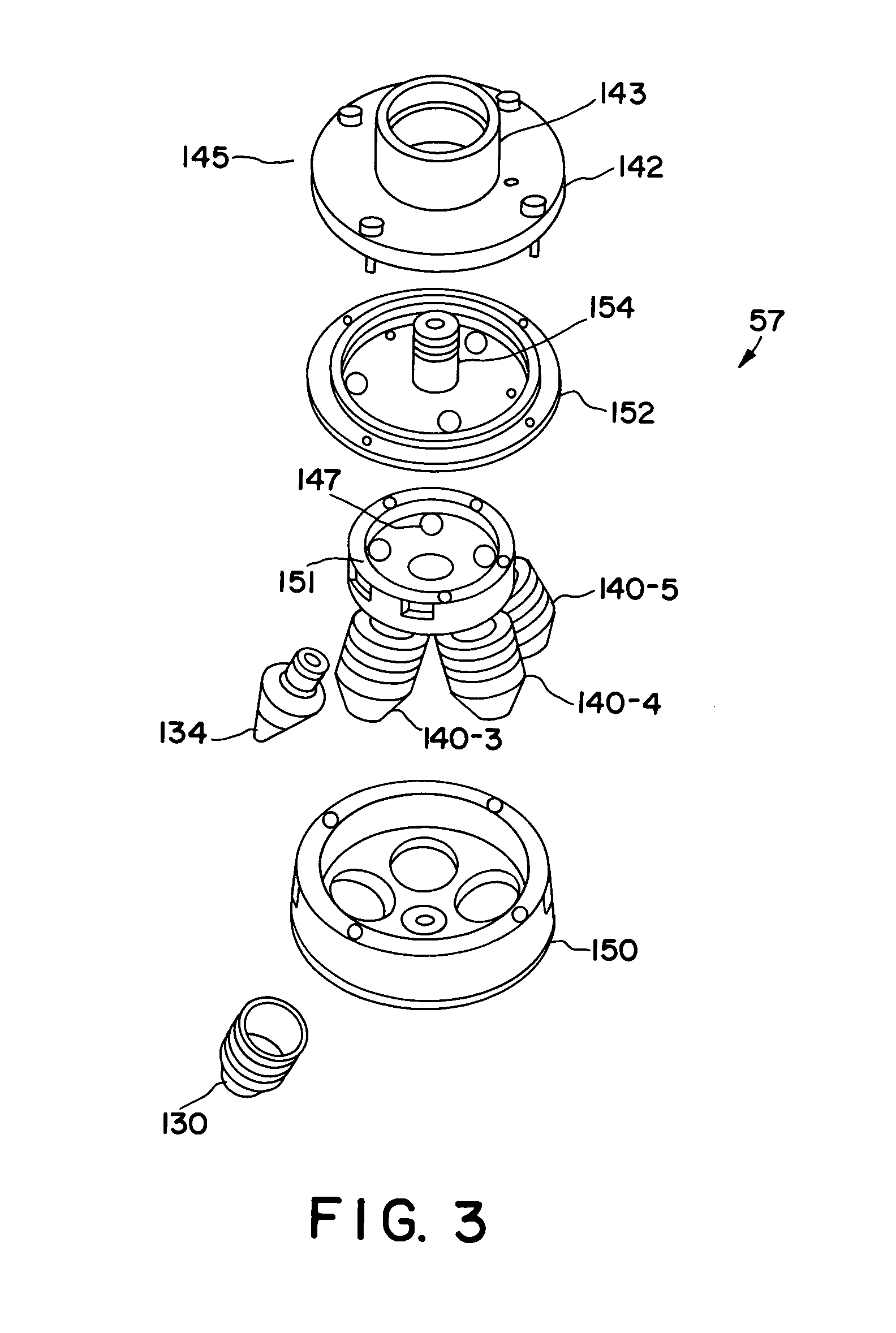Spray drying methods and related compositions
a technology of liquid atomization and composition, applied in the direction of drug composition, anti-inflammatory agents, metabolic disorders, etc., can solve the problems of difficulty in delivering pharmaceutical compositions as dry powders, difficulty in obtaining a large amount of liquid, so as to achieve a wide degree of control over particle morphologies
- Summary
- Abstract
- Description
- Claims
- Application Information
AI Technical Summary
Benefits of technology
Problems solved by technology
Method used
Image
Examples
example 1
[0081]The blending capabilities according to one aspect of the invention was investigated. Two aqueous solutions were spray dried in roughly equal proportions using the atomizer of the present invention in conjunction with a Niro (Mobile Minor) spray dryer. The two solutions consisted of: 1) monobasic sodium phosphate with leucine in a 1:1 ratio at 1% total solids concentration, and 2) dibasic sodium phosphate with leucine in a 1:1 ratio at 1% total solids concentration. This phosphate buffer system was selected due to its favorable pH stability and well-known pH vs. mixture ratio relationship. Two peristaltic pumps were provided to deliver the solutions to the atomizer circuits, with one pump feeding three circuits (three nozzles) and the second pump feeding the remaining two circuits (nozzles).
[0082]The solutions were spray dried with the atomizer under the following conditions:
[0083]
SPRAY DRYER RUN CONDITIONSSolution 1 (NaH2PO4-Leu) Feed Rate:30.1 ml / min (3 nozzles)Solution 2 (Na...
example 2
[0093]Three spray drying runs were performed using various feedstocks of a raffinose solution, raffinose and leucine solutions provided from separate nozzles, and a raffinose / leucine mixture. The three runs are further described below:
[0094]Spray Drying Run Number 87-1[0095]Solution 1: Raffinose[0096]Solids Content (weight percent): 10%[0097]Number of Nozzles: 2[0098]Total Flow Rate: 30 ml / min (15 ml / min per nozzle)[0099]Solution 2: Water[0100]Solids Content (weight percent): n / a[0101]Number of Nozzles: 3[0102]Total Flow Rate: 30 ml / min (10 ml / min per nozzle)[0103]Dryer Initial Condition: Clean[0104]Atomizer Pressure: 40 psig[0105]Total Dryer Flow Rate: 110 SCFM[0106]Dryer Inlet Temperature: 195° C.[0107]Dryer Outlet Temperature: 75.4-75.7° C.[0108]Empty Collector Weight: 227.2 g[0109]Run Time: 15.25 min.[0110]Post Run Collector Weight: 268.8 g[0111]Powder Collected: 41.6 g[0112]Powder Spray Dried: 45.8 g[0113]Yield: 91%
[0114]Spray Drying Run Number 88-3[0115]Solution 1: Raffinose / L...
PUM
| Property | Measurement | Unit |
|---|---|---|
| particle size | aaaaa | aaaaa |
| angle | aaaaa | aaaaa |
| size | aaaaa | aaaaa |
Abstract
Description
Claims
Application Information
 Login to View More
Login to View More - R&D
- Intellectual Property
- Life Sciences
- Materials
- Tech Scout
- Unparalleled Data Quality
- Higher Quality Content
- 60% Fewer Hallucinations
Browse by: Latest US Patents, China's latest patents, Technical Efficacy Thesaurus, Application Domain, Technology Topic, Popular Technical Reports.
© 2025 PatSnap. All rights reserved.Legal|Privacy policy|Modern Slavery Act Transparency Statement|Sitemap|About US| Contact US: help@patsnap.com



